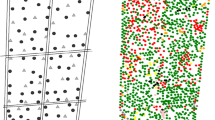Abstract
Museum collections hold large amounts of data on collecting dates and localities of eggs collected over the past 150 years. Egg collections hold the longest available time series for a wide range of bird species on a large spatial scale. Using data for two British species I investigate whether egg collection data can be used in phenological research. A method is presented allowing laying dates to be estimated from collecting dates. Problems and biases in the data are highlighted. Both the dipper and song thrush have started laying earlier over the past 150 years. The advance in laying is significantly correlated with mean March temperature.
Similar content being viewed by others
Author information
Authors and Affiliations
Additional information
Received: 25 October 2000 / Revised: 14 May 2001 / Accepted: 16 May 2001
Rights and permissions
About this article
Cite this article
Scharlemann, J. Museum egg collections as stores of long-term phenological data. Int J Biometeorol 45, 208–211 (2001). https://doi.org/10.1007/s004840100098
Issue Date:
DOI: https://doi.org/10.1007/s004840100098




